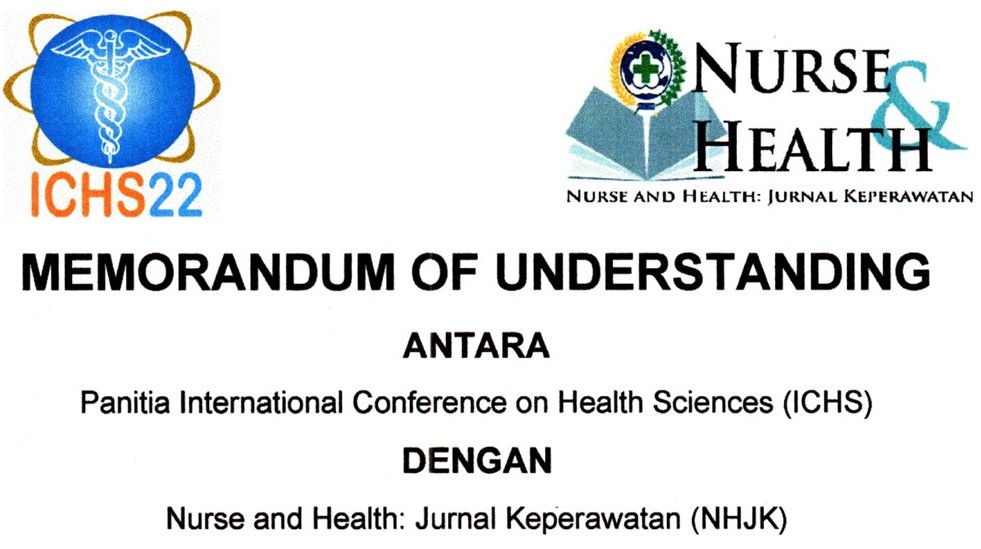RELATIONSHIP BETWEEN INFRASTRUCTURE AND HUMAN RESOURCES WITH MINIMUM SERVICE STANDARDS IN EMERGENCY INSTALLATION
Abstract
Background: Hospital Minimum Service Standards (SPM) are provisions for hospitals issued by the Minister of Health of the Republic of Indonesia in the context of government efforts to ensure the quality of hospital services. This Minimum Service Standard can be used as a guideline for the quality of service for every hospital in Indonesia. The Minimum Service Standard (SPM) is a quality guideline issued by the Minister of Health regarding the minimum service that must be provided by the hospital, where each hospital is required to assess and provide services by the Minimum Service Standards (SPM). Objectives: The purpose of this study was to determine the relationship between infrastructure and human resources with minimum service standards in the emergency department of the general hospital area I Lagaligo, East Luwu. Methods: The type of research used in this research is descriptive-analytic with a cross-sectional approach. This research was conducted from June to August 2020 in the Emergency Room I Lagaligo East Luwu General Hospital. Sample selection with total sampling technique. The research subjects were 33 respondents. the instrument used is a questionnaire. analysis used the chi-square test. Results: Based on the results of this study, it showed that there is a relationship between infrastructure and minimum service standards with a value of p-value = .008, there is a relationship between human resources and minimum service standards with a value of p-value = .000. Conclusion: There are infrastructure facilities that can be used directly by health workers for the benefit of patients in the form of tools, materials, comfortable rooms, and others. The human resources in the emergency department of Lagaligo Wotu Hospital are of good quality.Downloads
References
Astuti, S. W., Arso, S. P., & Fatmasari, E. Y. (2017). Analisis Proses Perencanaan dan Evaluasi Pelaksanaan Standar Pelayanan Minimal Instalasi Gawat Darurat di RSUD DR. R. Soetijono Blora. Jurnal Kesehatan Masyarakat (Undip), 5(4), 137-144.
Astrid, A. (2017). Analisis Pelaksanaan Standar Pelayanan Minimal (Spm) Untuk Pelayanan Bayi Di Puskesmas Lolak Kabupaten Bolaang Mongondow. Skripsi Kesehatan Masyarakat. Manado: Fakultas Kesehatan Masyarakat Universitas Sam Ratulangi Manado.
Darodjat, T. A. (2015). Konsep-konsep Dasar Manajemen Personalia – Masa Kini. Bandung: PT Refika Aditama.
Dinas Kesehatan Lebak. (2017). Sumber daya Manusia Kesehatan. Retrieved from http://dinkes.lebakkab.go.id/sumber-daya-manusia-kesehatan/. on October 10, 2020.
Harimat & Hendrawan. (2015). Analisis Implementasi Standar Pelayanan Minimal Bidang Kesehatan Kabupaten/Kota. Jurnal Badan Penelitian dan Pengembangan Kesehatan, Kementerian Kesehatan RI. 367. 380.
Indriono, A. (2020). Implementasi Standar Sumber Daya Manusia dan Pelayanan Minimal Kesehatan di Kota Pekalongan. Pena Justisia: Media Komunikasi dan Kajian Hukum, 19(1).
Kuzairi, U., Yuswadi, H., Budiharjo, A., & Patriadi, H. B. (2017). Implementasi Standar Pelayanan Minimal (SPM) pada pelayanan publik bidang pelayanan kesehatan (studi kasus pada rumah sakit umum dr. H. Koesnadi Bondowoso). Politico, 17(2).
Juanita & Tombuku, J. E. (2017). Analisis Pelaksanaan Standar Pelayanan Minimal Rumah Sakit Di Ruang Rawat Inap Rsud Dr Sam Ratulangi Tondano. Jurnal Kesehatan Masyarakat. Manado: Pascasarjana Universitas Sam Ratulangi.
Laksono & Trisnantoro. (2018). Jumlah RS di Indonesia Pertumbuhan RS Publik. Perhimpunan Rumah Sakit Seluruh Indonesia. Retrieved from https://www.persi.or.id/analis-data/441-jumlah-rs-di-indonesia-pertumbuhan-rs-publik on Oktober 10, 2020.
Lontoh, C. (2013). Pengaruh Pelatihan Teori Bantuan Hidup Dasar Terhadap Pengetahuan Resusitasi Paru Siswa-Siswi SMA Negeri 1 Toili. Retrieved from http://ejournal.unsrat.ac.id/index.php /jkp/article/view/2173 on October 10, 2020.
Musta’in, Ahmad. (2016). Implementasi Manajemen Supervisi Sekolah Dalam Peningkatan Mutu Pembelajaran Pendidikan Agama Islam Smp Negeri 2 Bae Kudus. jurnal.Pascasarjana Stain Kudus.
Putra, I. W. A. P., Rattu, A. J. M., & Pongoh, J. (2018). Analisis Pelaksanaan Standar Pelayanan Minimal Di Instalasi Gawat Darurat Rumah Sakit Gmim Kalooran Amurang. ikmas, 2(4).
Ridwan B (2017). Implementasi kebijakan standar pelayanan minimal di RSUD Undata Provinsi Sulawesi Tengah. E-Jurnal Katalogis. 5 (12):108-17.
Soeherman (2018). Pengaruh Implementasi Kebijakan Standar Pelayanan Minimal (Spm) Rumah Sakit Terhadap Kualitas Pelayanan Di Instalasi Farmasi Rs.Dr.Soekardjo Kota Tasikmalaya. Jurnal Magister Ilmu Administrasi Negara. Stia Yppt Priatim Tasikmalaya.
Sugiyono. (2017). Metode Penelitian Kuantitatif, Kualitatif, dan R&D. Bandung: Alfabeta, CV.
Supriyanto, E., Hariyanti, T., & Lestari, E. W. (2014). Analisa Faktor-faktor Penyebab Tidak Lengkapnya Laporan Standar Pelayanan Minimal Rumah Sakit di Rumah Sakit Muhammadiyah Ahmad Dahlan Kota Kediri. Jurnal Kedokteran Brawijaya, 28(1), 36-40.
Supriyantoro. (2017). Peran Instalasi Gawat Darurat (IGD) dalam Hospital Disaster Plan. Retrieved from http://www.depkes.go.id/ On October 10, 2020.
Kementerian Kesehatan RI. (2009). Undang-Undang Nomor 36 Tahun 2009 tentang Kesehatan. Jakarta: Kementerian Kesehatan RI
Vermasari, A., Masrul, M., & Yetti, H. (2019). Analisis Implementasi Standar Pelayanan Minimal (Spm) Di Instalasi Gawat Darurat (Igd) Rsu Mayjen Ha Thalib Kabupaten Kerinci. Jurnal Kesehatan Andalas, 8(2), 275-284.
Putra, I. W. A. P., Rattu, A. J. M., & Pongoh, J. (2017). Analisis pelaksanaan standar pelayanan minimal di instalasi gawat darurat rumah sakit GMIM Kaloorang Amurang. Jurnal IKMAS, 2(4), 77-85.
Copyright (c) 2021 Desak Nyoman Suartini, Andi Syamsul Bachri Jamal, Anas Budi

This work is licensed under a Creative Commons Attribution-NonCommercial 4.0 International License.
Authors who publish with Nurse and Health: Jurnal Keperawatan agree to the following terms:
- Authors retain copyright licensed under a Creative Commons Attribution-NonCommercial 4.0 (CC BY-NC 4.0), which allows others to remix, tweak, and build upon the authors' work non-commercially, and although the others' new works must also acknowledge the authors and be non-commercial, they don't have to license their derivative works on the same terms.
- Authors are permitted and encouraged to post their work online (e.g., in institutional repositories or on their website) prior to and during the submission process, as it can lead to productive exchanges, as well as earlier and greater citation of published work (See The Effect of Open Access). Authors can archive pre-print and post-print or publisher's version/PDF.








_resize1.jpg)















